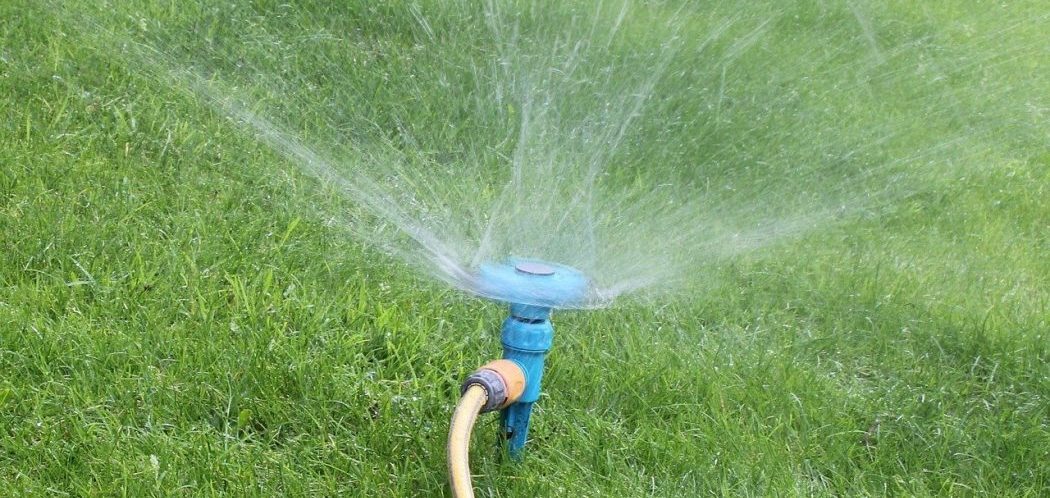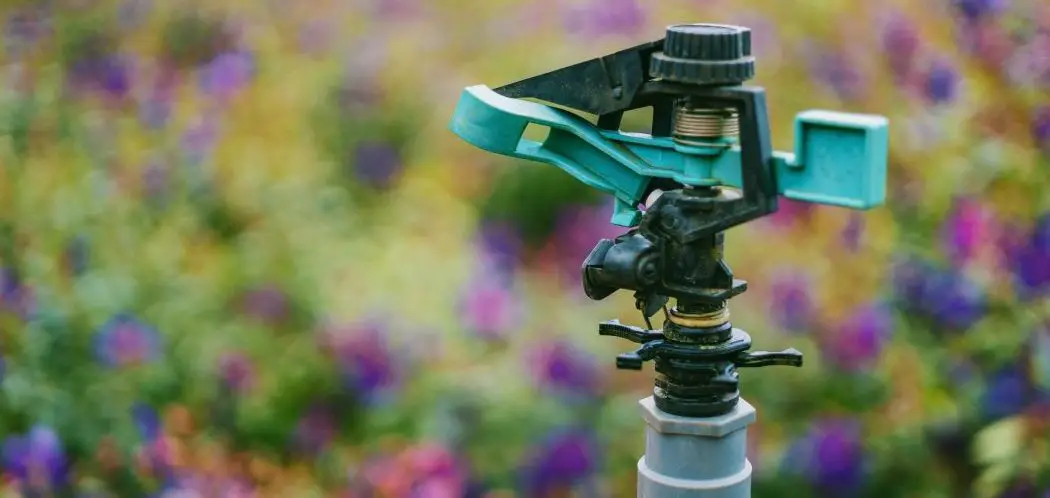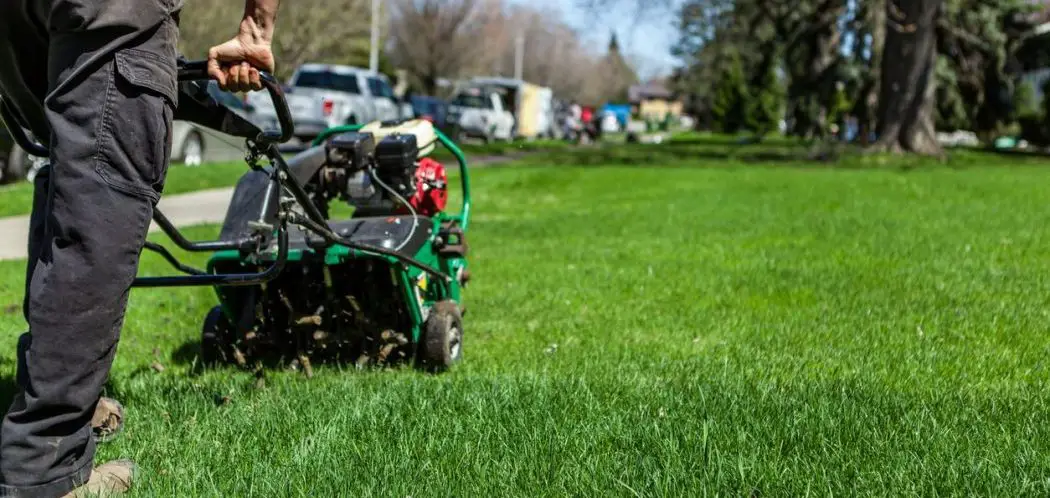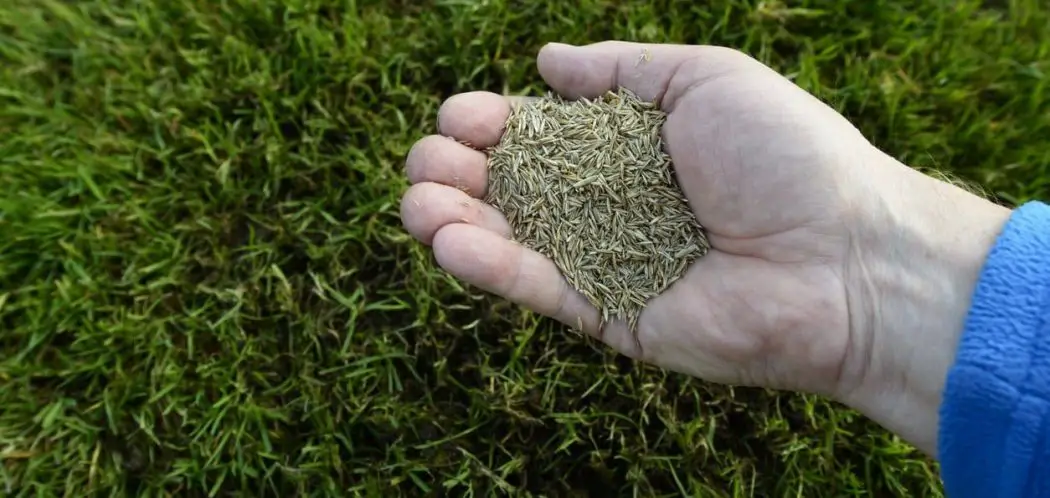Watering your lawn can be one of the most confusing aspects of lawn care. If you’ve just invested in a sprinkler system, you might be wondering how long you need to run it in order to put down the right amount of water.
It’s good to know exactly how much water you’re applying to avoid wasting it. Water certainly isn’t getting any cheaper! Using too much or too little can also be harmful to your grass.
A proper irrigation program will allow your lawn to look its best. It will be much more drought tolerant with a deep root system. It will also be less susceptible to fungus and disease.
Firstly, let’s look at some of the factors that can affect your sprinkler run time.
Factors Affecting Sprinkler Run Times for Your Lawn
When setting up your irrigation system in your yard, you’ll want to divide your lawn into different zones. These are different areas of your yard that are served by a single sprinkler head.
Each zone may need to have a different run time
If you’re currently programming all sprinkler heads for the exact same amount of time, that may not be the most optimal choice.
Garden shade
The first thing you’ll want to consider is which way each zone is facing. Areas that are south facing get a lot more sunlight, and therefore may need more water than areas that get more shade facing north.
How often you run your sprinkler system
A common thing you might hear is a recommendation to water the lawn for 10 minutes per day to help with heat stress. This is something I certainly disagree with.
It’s much better to water deep with less frequency. For most grass types, you’ll want to put down somewhere between ½ to 1 inch of water per week.
You’ll want to split this up into 2 or 3 sessions per week.
It’s good to water when you see signs of stress in a localized area. Where you have dry spots, you tend to see signs of discoloration.

Type of sprinkler head in a given zone
The type of sprinkler head can matter too. The most common sprinkler types are
- Spray/pop-up heads
- Rotary circle rotors
There’s a large difference between a rotary head and a spray head.
A rotary head shoots a stream of water across your lawn while rotating.
A spray head remains fixed and sprays water in a fan shape constantly.
Rotary heads are designed to cover much larger areas and need quite a long time to cover the whole area.
Spray heads are designed to cover smaller areas of your yard and are much faster at putting down enough for water for its designated area.
Grass Type
Some grass types are more drought tolerant than others. In general, cool season turf requires more water than warm season turf although there can be some slight variation between different types.
Soil Type
Your turf actually absorbs a small amount of water through its blades so you need to get water down into the root system.
Usually the root system covers the top six inches of soil.
The type of soil is going to matter here and will affect how much water you need to put down.
If you have clay soil, you’ll need to water a little bit longer because clay soils have a slow infiltration rate.
Layout of your sprinkler system
You’ll want to ensure your sprinkler heads are spaced out evenly through the lawn, in some areas there might be a slight overlap between zones but you want to make sure all of the lawn is covered.
It’s not always possible for your sprinkler configuration to line up perfectly with the layout of your yard.
If you have a suboptimal layout, you might have to water longer to keep all of the areas well-watered.
New sod
There are few exceptions to running your sprinkler system deeply and frequently. One of these is if you’ve recently planted new sod. For the first two or three weeks, you’ll want to water regularly throughout the day to keep the sod damp to help it establish roots. Following this time, you’ll want to get back to a pre-dawn watering schedule.
What time should you run your sprinklers?
A lot of people run their sprinkler system during the day which is counterproductive.
You might see golf course and sports fields watering their grass in the late afternoon, but this is usually done to soften the grass because these areas tend to get a lot of foot traffic. If the grass is too dry, a lot of foot traffic can cause the blades to break. Their real irrigation will usually always be done in the early hours of the morning before the sun warms things up.

I like to water between 4am and 6am. During this time, the temperature is cool and the water can soak down deep into the root system. Any excess water is evaporated off when the sun comes up. This is also important to prevent lawn disease and fungus.
During these hours the wind is at its lowest too so your sprinkler system will run most efficiently.
Finally, in the early hours, its less likely that other water consumers like washing machines/dishwashers will be running. These can alter the pressure to your irrigation system.
Knowing how many zones it will take to irrigate your yard
In order to do this, you’ll need to know a few metrics:
- The area of your lawn
- The precipitation rate of your system
- How much water you have available at the source
To get the area of your yard you can either measure the dimensions and then do some simple math. If your lawn is difficult to measure or you need to do this for multiple yards, you might want to consider using a website like goilawn.com that uses satellite imagery to calculate the area.
You also need to know what type of sprinklers you have and what the output is. They are usually measured in precipitation rate/inches per hour.
Most pop up head sprinkler systems apply around 2 inches of water per hour.
It’s also important to note that water pressure can vary depending on the time of day so you’ll want to calibrate the system at the same time you’ll be running your irrigation system. This should be early in the morning.
Let’s look at a quick example of how this works in my yard.
The area of my yard is 20k square feet and the sprinkler head I’m using has a precipitation rate of 0.5 in/hr.
We need to multiple these numbers together and then convert to get the units into gallons per minute.
Putting this together we have
(20k square feet x 0.5 inches per hour) / 96.3 = 103.8 GPM
Now if we know how much water is available at the source, we can divide by this number to give us a lower bound for the number of zones we need to properly irrigate the lawn.
For example, if there is 20 GPM at the source, we have
103.8/20 = 5.19 zones which I round up to 6.
This is just an estimate and can be used as a baseline.
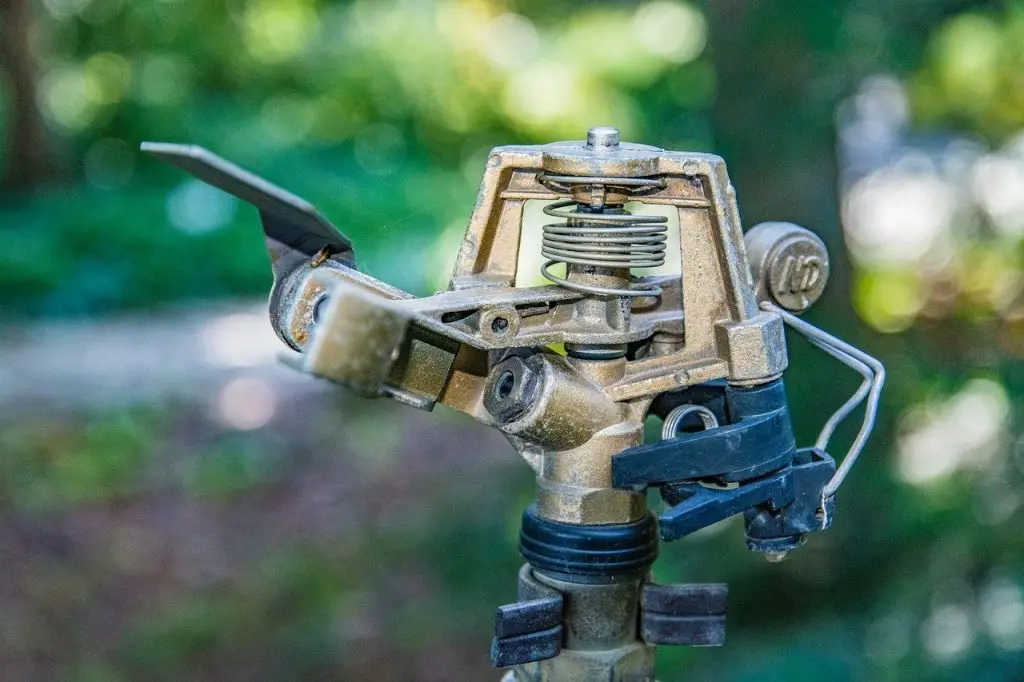
Determine Your Sprinkler Run Time
You may have heard of the ‘tuna can challenge’. This is where you take several tuna cans and put them in each irrigation zone. You then turn your sprinklers on for a set amount of time. At the end of that time, turn off the irrigation system and measure how much water you have in each can.
This can give you a good measurement of how long it takes for your irrigation system to put down a given amount of water in a time period.
I’ve found this to be the best way to get your irrigation system dialled in!
Since tuna cans are about an inch deep, you can measure the time it takes to fill up.
Ideally, the amount of water in each can should stay fairly consistent although you might want it to vary slightly for different areas of your yard.
You don’t have to use a tuna can to do this. You can get a rain gauge from any gardening store too.
Keeping time of how long it takes to get to ½ inch of water will be a great starting point for most people.
Typically, you don’t want to deliver the full inch of water. It’s much better to water ½ inch a couple of times a week because you want the soil to be able to dry out between irrigation cycles.
If you’re in drought conditions, you can adjust this up as necessary.
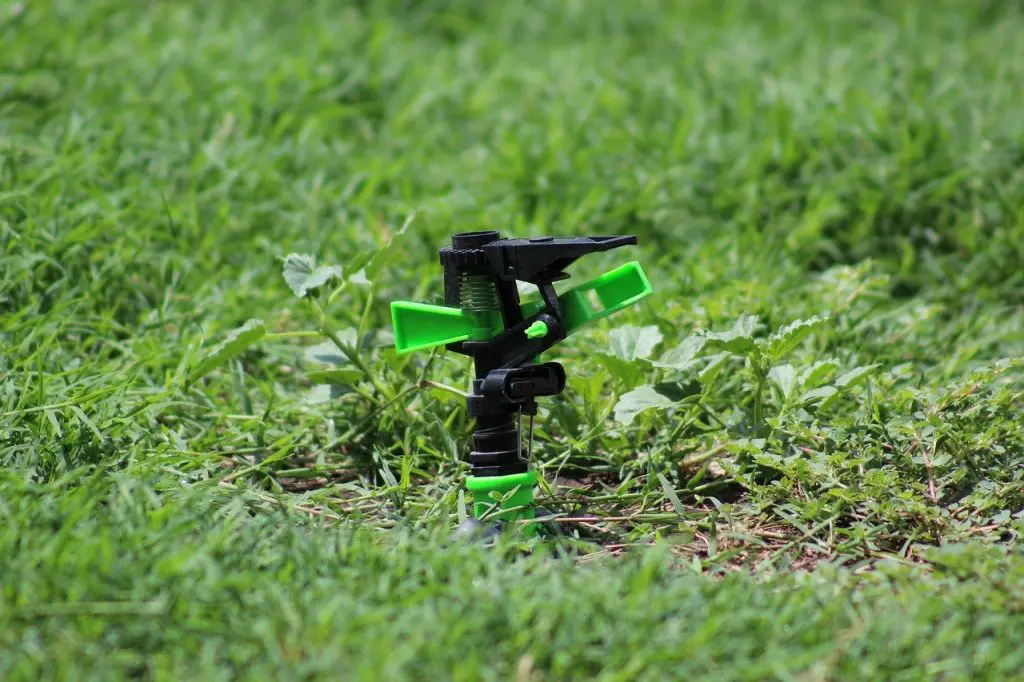
How Long Does It Take a Sprinkler to Water 1 Inch?
Most sprinkler system usually take around 30 minutes to fill up to a half inch of the rain gauge at the outer range.
You will need to test yours out though. This time can vary due to water pressure differences. Everyone will have a slightly different water pressure at their house.
Type of sprinkler you have will matter too.
You’ll need to do this test for every zone in your yard. After you tested this out once, you’ll be able to write down how long it takes for each zone to reach a certain amount of water.
If you have an automatic irrigation system, you can set it up to run for a pre-determined time in each zone.
Some sprinkler systems will even do rain skips too.
You might have watering restrictions in your area. It’s your job to work out how to run your irrigation system within the rules.
You can save water by making sure your setup is most optimal. Some areas will allow you to hand water anytime you want to so you might want to keep this in mind if you have hard to reach areas or weak spots.
A quick way to estimate sprinkler run times
One way you can estimate your sprinkler run time quickly is to use a system calculator online. I’ve found the Precip-Mate app tool from sprinklersystemcalculator.com to be quite useful. It takes into account temperature, the precipitation rate of your sprinkler and the type of turf you have. The formula it uses provides a rough estimate but it’s a great starting point.
Final Thoughts
There are quite a few factors that you can take into account when determining how long to run sprinklers in your lawn. Most likely, you’ll be breaking down your yard into several zones. You will then set each sprinkler to run for a certain length of time. It’s really up to you on how elaborate you want to get with this. You can make it as simple/complex as you want to.

